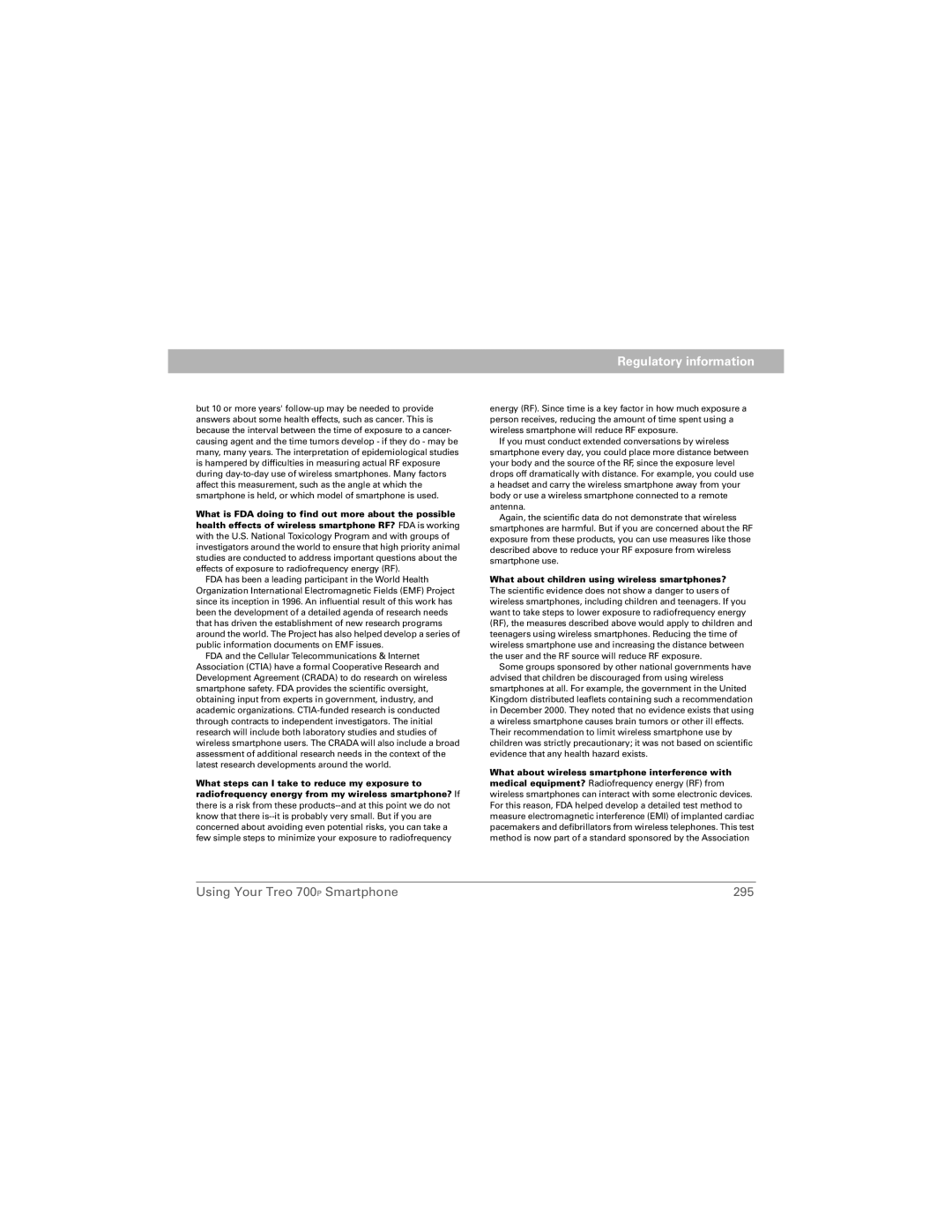
Regulatory information
but 10 or more years'
What is FDA doing to find out more about the possible
health effects of wireless smartphone RF? FDA is working with the U.S. National Toxicology Program and with groups of investigators around the world to ensure that high priority animal studies are conducted to address important questions about the effects of exposure to radiofrequency energy (RF).
FDA has been a leading participant in the World Health Organization International Electromagnetic Fields (EMF) Project since its inception in 1996. An influential result of this work has been the development of a detailed agenda of research needs that has driven the establishment of new research programs around the world. The Project has also helped develop a series of public information documents on EMF issues.
FDA and the Cellular Telecommunications & Internet Association (CTIA) have a formal Cooperative Research and Development Agreement (CRADA) to do research on wireless smartphone safety. FDA provides the scientific oversight, obtaining input from experts in government, industry, and academic organizations.
What steps can I take to reduce my exposure to radiofrequency energy from my wireless smartphone? If
there is a risk from these
energy (RF). Since time is a key factor in how much exposure a person receives, reducing the amount of time spent using a wireless smartphone will reduce RF exposure.
If you must conduct extended conversations by wireless smartphone every day, you could place more distance between your body and the source of the RF, since the exposure level drops off dramatically with distance. For example, you could use a headset and carry the wireless smartphone away from your body or use a wireless smartphone connected to a remote antenna.
Again, the scientific data do not demonstrate that wireless smartphones are harmful. But if you are concerned about the RF exposure from these products, you can use measures like those described above to reduce your RF exposure from wireless smartphone use.
What about children using wireless smartphones?
The scientific evidence does not show a danger to users of wireless smartphones, including children and teenagers. If you want to take steps to lower exposure to radiofrequency energy (RF), the measures described above would apply to children and teenagers using wireless smartphones. Reducing the time of wireless smartphone use and increasing the distance between the user and the RF source will reduce RF exposure.
Some groups sponsored by other national governments have advised that children be discouraged from using wireless smartphones at all. For example, the government in the United Kingdom distributed leaflets containing such a recommendation in December 2000. They noted that no evidence exists that using a wireless smartphone causes brain tumors or other ill effects. Their recommendation to limit wireless smartphone use by children was strictly precautionary; it was not based on scientific evidence that any health hazard exists.
What about wireless smartphone interference with
medical equipment? Radiofrequency energy (RF) from wireless smartphones can interact with some electronic devices. For this reason, FDA helped develop a detailed test method to measure electromagnetic interference (EMI) of implanted cardiac pacemakers and defibrillators from wireless telephones. This test method is now part of a standard sponsored by the Association
Using Your Treo 700P Smartphone | 295 |
